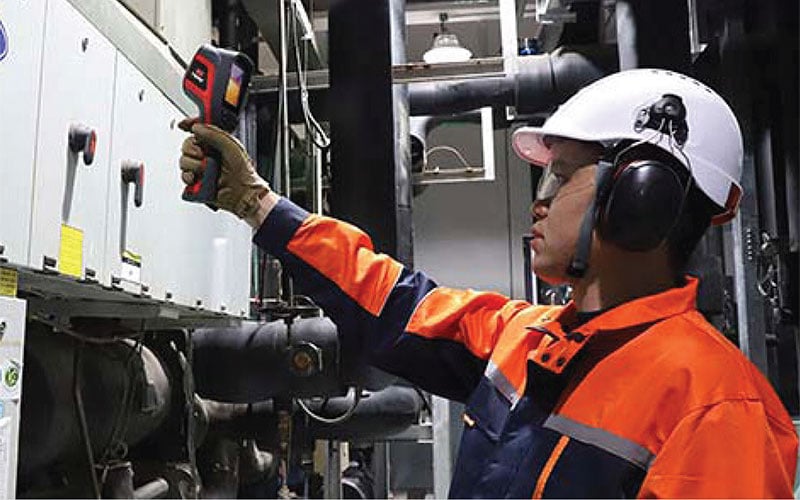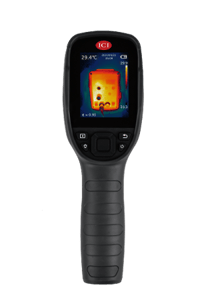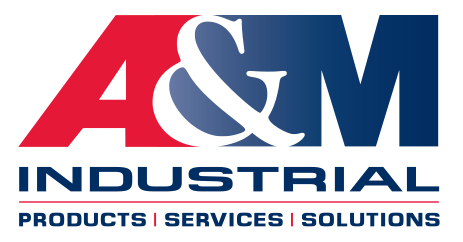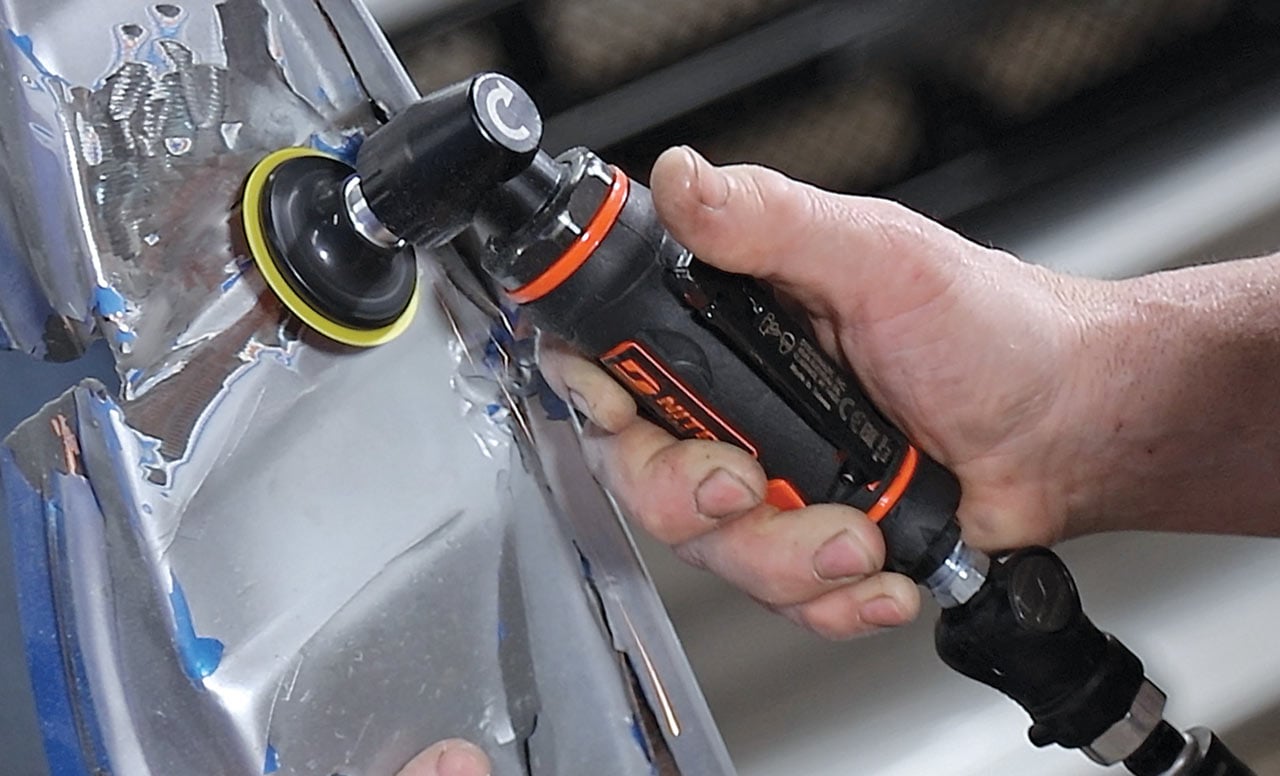Top 10 Things To Consider Before Buying An Infrared Camera

An infrared camera, also known as an IR camera, is an invaluable piece of equipment that utilizes infrared thermography to measure the temperature of an object surface. Infrared thermography is a passive imaging method for contactless temperature measurement. Use of an infrared camera is especially useful for preventative maintenance tasks in a facility, as it allows you to identify potential issues that exist behind structure walls, HVAC components, and within machinery.
#1: BUY AN INFRARED CAMERA WITH THE HIGHEST DETECTOR RESOLUTION/IMAGE QUALITY THAT YOUR BUDGET ALLOWS.
 The higher the image resolution, the better the image quality. Most infrared cameras have fewer pixels than visible light cameras, so pay close attention to detector resolution. Higher resolution infrared cameras can measure smaller targets from farther away and create sharper thermal images, both of which add up to more precise and reliable measurements. Also be aware of the difference between detector and display resolution. Some manufacturers will boast about a high resolution LCD and hide their low resolution detector when it’s the detector resolution that matters most. For instance, LCD resolution may spec at 640 × 480, capable of displaying 307,200 pixels of image content. But if the IR detector pixel resolution is only 160 × 120 (19,200) pixels, then the greater display resolution accomplishes absolutely nothing because the quality of the thermal image and its measurement data are always determined by the detector resolution. Higher resolution thermal imaging not only provides more accurate quantitative results, it can be very effective in showing findings in finer detail to customers, supervisors, repair crews, and insurance companies which can help move along the decision-making process for improvements and repairs. Superior IR image quality is also valuable for generating clearer reports and for marketing your services.
The higher the image resolution, the better the image quality. Most infrared cameras have fewer pixels than visible light cameras, so pay close attention to detector resolution. Higher resolution infrared cameras can measure smaller targets from farther away and create sharper thermal images, both of which add up to more precise and reliable measurements. Also be aware of the difference between detector and display resolution. Some manufacturers will boast about a high resolution LCD and hide their low resolution detector when it’s the detector resolution that matters most. For instance, LCD resolution may spec at 640 × 480, capable of displaying 307,200 pixels of image content. But if the IR detector pixel resolution is only 160 × 120 (19,200) pixels, then the greater display resolution accomplishes absolutely nothing because the quality of the thermal image and its measurement data are always determined by the detector resolution. Higher resolution thermal imaging not only provides more accurate quantitative results, it can be very effective in showing findings in finer detail to customers, supervisors, repair crews, and insurance companies which can help move along the decision-making process for improvements and repairs. Superior IR image quality is also valuable for generating clearer reports and for marketing your services.
#2: NEED TO PRESENT YOUR FINDINGS? FIND A SYSTEM WITH A BUILT-IN VISIBLE-LIGHT CAMERA OUTFITTED WITH AN ILLUMINATOR LAMP AND A LASER POINTER.
There’s no need to carry a separate piece of equipment to take photos when many affordable IR cameras now include a built-in digital camera that simultaneously captures visible light and thermal images. Digital photos that correspond to your IR images will help you further document a problem and communicate its precise location to decision-makers. So, if your customer or supervisor needs to see a comprehensive report, you’ll definitely want a thermal imaging camera with this feature. And be sure it includes an onboard lamp that doubles as a flashlight to illuminate darker areas. Built-in laser pointers are also invaluable, especially for isolating the location of a target surrounded by similar-looking components, such as breakers, or for pinpointing problematic energized electrical equipment where you need to keep your distance. Laser markers show up clearly on visible light pictures to provide a reliable reference. They’re also indicated on IR images as well as the thermal camera’s display so you’ll be confident you’ve captured all the necessary information.
#3: SELECT A CAMERA THAT DELIVERS ACCURATE AND REPEATABLE RESULTS.
Infrared cameras don’t just let you see differences in heat, they let you measure those differences, which means the accuracy and consistency of the measurements is a very important factor when determining the value of a camera. For best results, look for a thermal imager that meets or exceeds ± 2% (or 3.6°F) accuracy. In order to produce correct and repeatable results, your thermal imager should include in-camera tools for entering both “emissivity” and “reflected temperature” values. An infrared camera that gives you an easy way to input and adjust both of those parameters will produce the accurate temperature measurements you need in the field to make the best call. Other helpful diagnostics to consider are multiple moveable spots and area boxes for isolating and annotating temperature measurements that can be saved as radiometric data and incorporated into findings for reports. As you become more experienced with your infrared camera, these features will become more meaningful. But before you proceed with your buying decision, find out whether the thermal imager you like offers these capabilities.
#4: LOOK FOR AN IR CAMERA THAT STORES AND OUTPUTS STANDARD FILE FORMATS THAT ARE BROADLY SUPPORTED.
Many infrared cameras store images in a proprietary format that can only be read and analyzed with specialized software. Others have an optional JPEG storage capability that lacks temperature information. Some cameras feature composite video out for cabling to digital recorders while others include HDMI outputs. Mobile applications have also been developed that allow streaming video over Wi-Fi. All these capabilities will help you share findings more effectively and enhance your infrared inspections and reports.
#5:CONSIDER THE ADDED VALUE OF AN IR CAMERA THAT LINKS TO BLUETOOTH-ENABLED T&M METERS FOR ASSESSING ELECTRICAL LOAD AND MOISTURE LEVELS.
New test and measurement tools allow certain thermal cameras to measure more than temperature to fully quantify the severity of moisture damage and electrical issues. These moisture and clamp meters wirelessly transmit vital diagnostic data such as humidity, amperage, voltage, and resistance directly to the camera. The data is annotated automatically to the thermal image and embedded in the radiometric JPEG to add support to findings. This provides extremely valuable information to help you determine the urgency of a problem and decide on the best solution.
#6: WI-FI APPS FOR MOBILE DEVICES STREAMLINE THE SHARING OF THERMAL IMAGES AND DATA: SELECT A CAMERA COMPATIBLE WITH THIS TECHNOLOGY.
It’s now possible to connect many infrared cameras via Wi-Fi to smartphones and tablets. This allows users to import IR images to the mobile device for portable analysis, report generation, and sharing. The advantage of being able to send thermal images and IR inspection reports wirelessly from one part of a facility to another or by email from the field is huge when time is of the essence. The app also allows live streaming video for customers and co-workers to view inspections from a safe, convenient distance.
#7: MAKE SURE YOU GET A CAMERA WITH THE ERGONOMIC FEATURES THAT MAKE YOUR JOB AS EASY AS POSSIBLE TO MATCH THE WAY YOU LIKE TO WORK.
The camera’s weight can be a significant concern if you’ll be using it frequently or for extended periods of time. A lighter thermal camera will decrease strain on your shoulder and back during long inspections. A wide selection of compact, light point-and-shoot thermal cameras are available at surprisingly affordable prices and fit nicely into tool boxes and utility belts and pouches. Another important thing to consider is the camera’s interactive controls. Does it have dedicated buttons, direct access menus, both? A few extra simple buttons that are intuitively positioned can actually make the camera easier to use as opposed to relying on one button to step through menu options. Some cameras offer integrated touch screens as another advantageous way to access functions and features, including text and sketch notations. And make sure your camera is outfitted with at least two batteries (Lithium ion or better) that can be quickly and easily switched out in the field so you can keep working efficiently.
#8: THERMAL IMAGE ENHANCEMENT AND PICTURE-IN-PICTURE (P-I-P) WILL ALLOW YOU TO COMBINE THERMAL AND VISIBLE-LIGHT IMAGES FOR GENERATING REPORTS THAT ARE EASIER TO UNDERSTAND.
Options that allow visible spectrum details (ie: numbers, labels, and signage) are often available. P-i-P is another onboard mode that can be used for clearer documentation, allowing thermographers to inset a thermal image over its corresponding visible-light photo. Both choices help better-communicate the location of a problem to customers, colleagues, and repair crews.
#9: NOT ALL REPORTING SOFTWARE PRODUCTS ARE CREATED EQUAL: BE SURE TO TRY OUT THE PRODUCT FIRST TO FIND THE ONE THAT’S RIGHT FOR YOU.
Reporting is an indispensable feature in an infrared program or business. Clients, from individual home owners to large corporations, require documentation of your findings. Thermal image and report data can be a key element in a wide range of applications: energy audits, electrical inspections, gas detection surveys, building envelope analyses, and predictive maintenance programs. They’re often used to initiate insurance claims and substantiate restoration repairs. Today, most infrared cameras come with free software that allows you to perform basic image analysis and to create simple reports. Advanced software for more in-depth analysis and customizable reports is also available, allowing you to take full advantage of your camera’s capabilities and features. Some thermal imagers allow the generation of instant reports right in the camera and/or using an app on mobile devices connected to Wi-Fi enabled cameras. IR analysis software can perform a wide range of tasks from simple spot measurements to custom radiometric calibrations. Many thermal imaging manufacturers and third party providers also offer software packages designed for a range of specific applications – from building inspection to advanced research and development. Investigate these tailored software programs to see which may make the most sense for your business.
#10: CHOOSE A THERMAL IMAGER WITH A WIDE TEMPERATURE RANGE SO YOU CAN MEASURE AMBIENT AND HIGH-TEMPERATURE SPOTS IN THE SAME IMAGE.
An infrared camera’s temperature range and sensitivity are important considerations, too. The range tells you what the minimum and maximum temperatures are that the camera can measure (-4°F to 2,192°F is a typical example). Select an IR camera with a temperature range broad enough to capture all of the temperatures of the objects or scenes you typically encounter. Sensitivity shows you the smallest temperature difference between two objects that the camera can discern (0.045°C, for example). The more sensitive the detector, the subtler the details you’ll be able to see, which can be especially helpful when inspecting for moisture intrusion and other heat issues with minute temperature variations.
NEED ASSISTANCE SELECTING A THERMAL CAMERA?
Contact an A&M Industrial representative for more help selecting the right infrared camera for your application. Ask about our selection of thermal imaging equipment from Fluke, Klein Tools and ICI. Rely on A&M Industrial for a wide range of mill supplies, including power tools, tool wrap, lubricants and more.
ICI IR Camera limited time only promotion
Available only while supplies last, the ICI T-CAM 300 P-Series Hand-held Infrared Camera is available at its lowest price ever, plus with FREE Shipping in the continental US! The ICI T-CAM 300 P-Series Infrared Camera:
- Provides high quality 256 x 192 thermal images in rich details.
- Provides a wide temperature range measuring from -20 °C to 550 °C (-4 °F to 1022 °F), with an accuracy of ± 2°C (± 3.6 °F) or ± 2%.
- 11 hours of battery life ensures the T-Cam 300 meets time requirements of inspections.
- ICI Dual Vision to overlay visible and thermal images with color palettes to enhance viewing.




